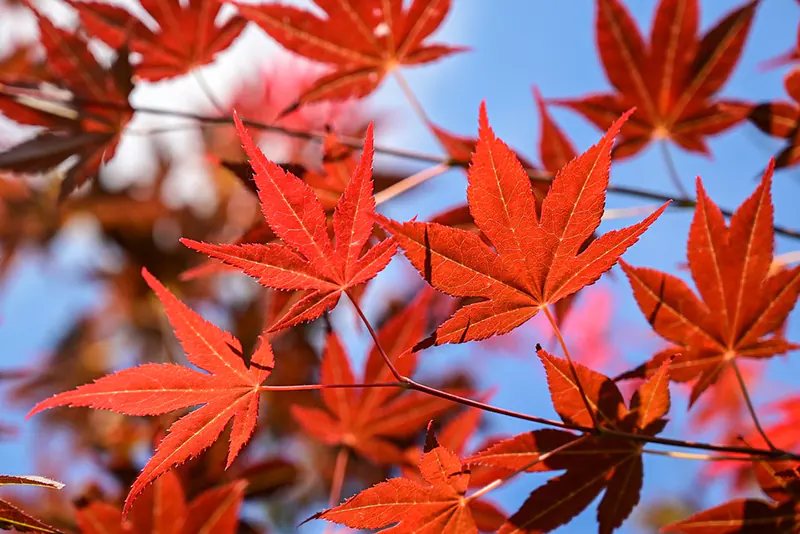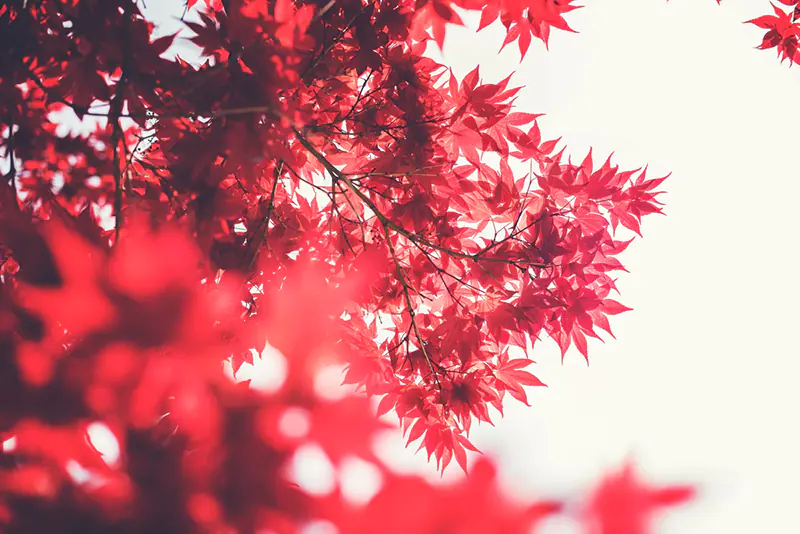Emperor Japanese Maple Bonsai Care
The Emperor Japanese maple is one of the smaller trees of its species. As such, it makes a fantastic and gorgeous bonsai that you can grow with little to no experience. This guide will walk you through all of the tree’s requirements and various other need-to-know details.
If you’ve never grown a bonsai before, we advise you to look at our other guides as well. If you’re a bonsai veteran, we have a quick table of requirements for the emperor Japanese maple, getting you pruning, shaping, and potting sooner.
Here's what you'll find in our Emperor Japanese Maple bonsai species guide:
Here's what you'll find in our Emperor Japanese Maple bonsai species guide:
01
02
03
04
05
Quick Emperor Japanese Maple Bonsai Care Sheet
If you’re experienced with growing bonsai or simply want a quick overview, this section is for you. The table below summarizes most of the information you’ll find within the article.
Recommended soil | Regular bonsai soil or an akadama mixture. |
Watering | Once a day. |
Potting season | Every second year, during autumn. |
Shaping and pruning season | Every second year, during autumn. Cut past is advised. |
Light | Full sun with partial shade. Morning sunlight preferred. |
Fertilizing | Organic fertilizer. Must have a low nitrogen content. |
Propagation methods | Seeds, air layering, and cuttings. |
Pests and diseases | Aphids and verticillium wilt. |

How to Care for an Emperor Japanese Maple Bonsai
Caring for your emperor Japanese maple is a task no short of caring for a real emperor. You’ll need to watch the bonsai as it grows, watching for any sign of infection and pruning when necessary.
Best Soil
For the best moisture retention without keeping your bonsai’s roots constantly wet, use an akadama soil mixture. Adding pumice and lava rocks will enhance the soil’s ability to retain and deliver nutrients to your emperor Japanese maple. Alternatively, regular bonsai soil that drains well is a great choice.
Watering
Water your emperor Japanese maple bonsai tree every day, ensuring the soil is decently moist each time. During warmer temperatures and high sun exposure, you may need to water the tree twice a day. When watering the tree, always remember to touch the soil and check its moisture level beforehand.
Repotting
Repot the Emperor Japanese maple every second year. Regardless of the tree’s age, you’ll always need to do this procedure every two years due to its rapidly growing roots. While repotting, trim the roots down to a more controllable size and wash them thoroughly.
Shaping And Pruning
Shaping and pruning can be done every second year during autumn. You can trim the small parts of the leaves during the year; however, larger branches will place more stress on the tree when trimmed outside of autumn. We highly encourage you to use a cut-paste when severing larger branches.
Location And Sunlight
Requiring full sun and partial shade outdoors is a great place to keep your emperor Japanese maple bonsai. Regardless of location preference, the morning sun is the best option for the tree, as afternoon sunlight can negatively affect its health.
We encourage you to move the tree indoors or into a sheltered area during the winter months. While slightly resistant to cold, temperatures near freezing will harm the bonsai.
Fertilizing
Use a solid organic fertilizer with an added liquid option mixed in when an extra-strong effect is needed. These options should have a low nitrogen content, as nitrogen will cause your bonsai’s leaves to grow faster and require more frequent pruning.
Propagation Methods
Seeds, cuttings, and air layering are all great ways to make a new emperor Japanese maple bonsai.
Pests And Diseases
Aphids are small pests that you may miss unless you look closely. The insects eat sap or other nutrients on your tree’s surface. Frequent misting and common insecticides are great ways to prevent or eliminate these bugs.
Infections such as verticillium wilt are a common nuisance to growing an emperor Japanese maple bonsai. Using cut paste and regularly misting your tree to help it stay clean will lower the chance of an infection. Additionally, cleaning your roots during the repotting helps keep them safe from any fungal infection.
Considerations for Growing an Indoor Emperor Japanese Maple
Growing the Emperor Japanese maple indoors is simple; however, the climate is a key aspect to keep in mind. A poor climate will negatively affect the growth of your tree.
Climate
The climate where you keep your indoor Emperor Japanese maple is key to its survival. Too warm or too cold, both of which are unlikely if you regulate the inside temperature, can harm your tree. Keep the bonsai by a sun-facing window that receives more morning than afternoon sunlight, close the window during winter, and allow a cool breeze during summer if possible.
Common Issues When Caring For an Emperor Japanese Maple Bonsai
No bonsai grows without any issues, especially if you’ve never grown one before. Here’s what to watch out for when growing the emperor Japanese maple bonsai.
Watering
As the Emperor Japanese maple bonsai is an extremely thirsty tree, you’ll need to water it at least once a day. Forgetting to water your bonsai will slow down its growth rate, and forgetting too often may significantly harm its health.
Pruning Too Frequently
Pruning your tree every year or more often can damage its leaves. Over-trimming results in delicate and damaged foliage, which doesn’t absorb sunlight and fails to produce enough nutrients. Prune your emperor maple bonsai every two years during autumn for the best growth.
FAQs about the Emperor Japanese Maple Bonsai
Here are the three most commonly asked questions about the emperor Japanese maple bonsai. Here we’ll explain the differences between this Japanese maple and the Bloodgood, how to keep it indoors, and how to grow your own emperor maple.
Emperor Japanese maples make exciting bonsai trees. They’re easy to grow and maintain, have only a few basic requirements, and a careful eye. Turning the Emperor Japanese maple tree into a bonsai is simple, and you can propagate a new one using seeds, cuttings, and air layering.
Placing the Emperor Japanese maple bonsai near a sun-facing window is the first step to growing it indoors. Afterward, ensure the tree receives water at least once a day. A solid organic fertilizer is advised to aid the maple’s growth.
The noticeable difference between the Bloodgood and emperor Japanese maples is the size. Bloodgood Japanese maples are generally larger once fully grown, even as a bonsai. This sizing may play a part in deciding whether or not to grow an Emperor Japanese maple.







